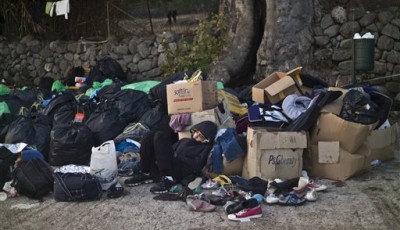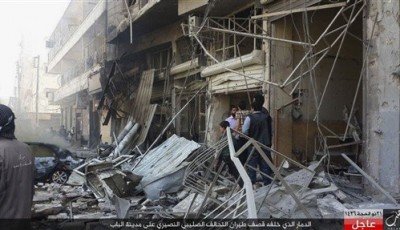ISIL Militants Blow Up Ancient Temple in Palmyra, Syria
Islamic State militants have destroyed Palmyra’s ancient temple of Baalshamin, Syrian officials and activists said, according to BBC News.
The Sunni extremists, who have imposed a violent interpretation of Islamic law across their self-declared “caliphate” in territory they control in Syria and Iraq, claim ancient relics promote idolatry and say they are destroying them as part of their purge of paganism.
A picture taken on March 14, 2014 shows the Temple of Baal Shamin seen through two Corinthian columns in the ancient oasis city of Palmyra, 215 kilometers northeast of Damascus.
The Britain-based Syrian Observatory for Human Rights said Sunday night that the temple was blown up a month ago.
“The militants placed large quantities of explosives [into the temple] and then blew it up, seriously damaging it”, Maamoun Abdulkarim told Sputnik on Sunday.
“The cella (inner area of the temple) was destroyed and the columns around collapsed”, he said.
ISIS fighters seized control of Palmyra and the nearby modern town of Tadmur in May, prompting fears over what the militants would do to the UNESCO World Heritage Site.
“He told them: Palmyra is my sweetheart, my life, my memory, my history; I won’t leave and be a refugee”.
The Roman-era temple was built in the 1st Century and is dedicated to the Phoenician god of storms and fertilising rains.
Elsewhere, ISIS has released footage of its fighters smashing artifacts in the museum of the Iraqi city of Mosul and using sledgehammers, power tools and explosives to destroy the ancient Assyrian city of Nimrud.
“Our darkest predictions are sadly happening”, stated Abdulkarim.
Funerary busts were also destroyed by IS in Palmyra.
Most of the pieces in the museum were evacuated by antiquities staff before IS arrived, though the group has blown up several historic Muslim graves.
The jihadists “carried out executions in the traditional theatre (of Palmyra), they destroyed in July the well-known Lion Statue of Athena… and reworked the museum into a jail and a courtroom”.












